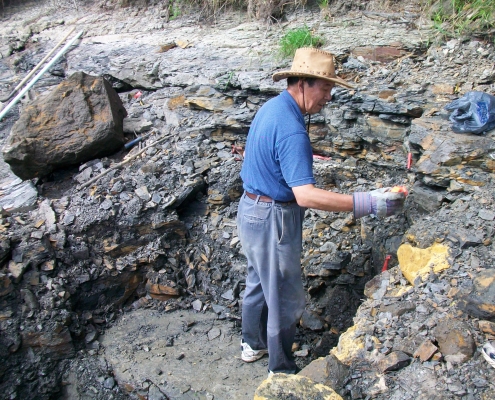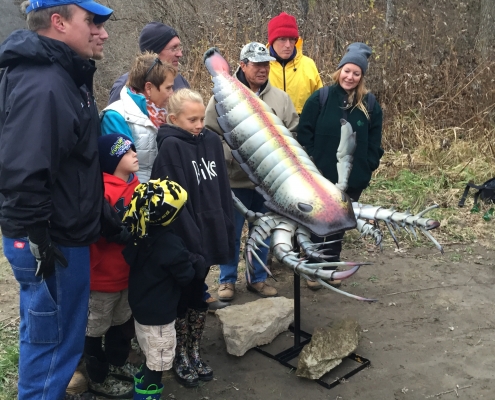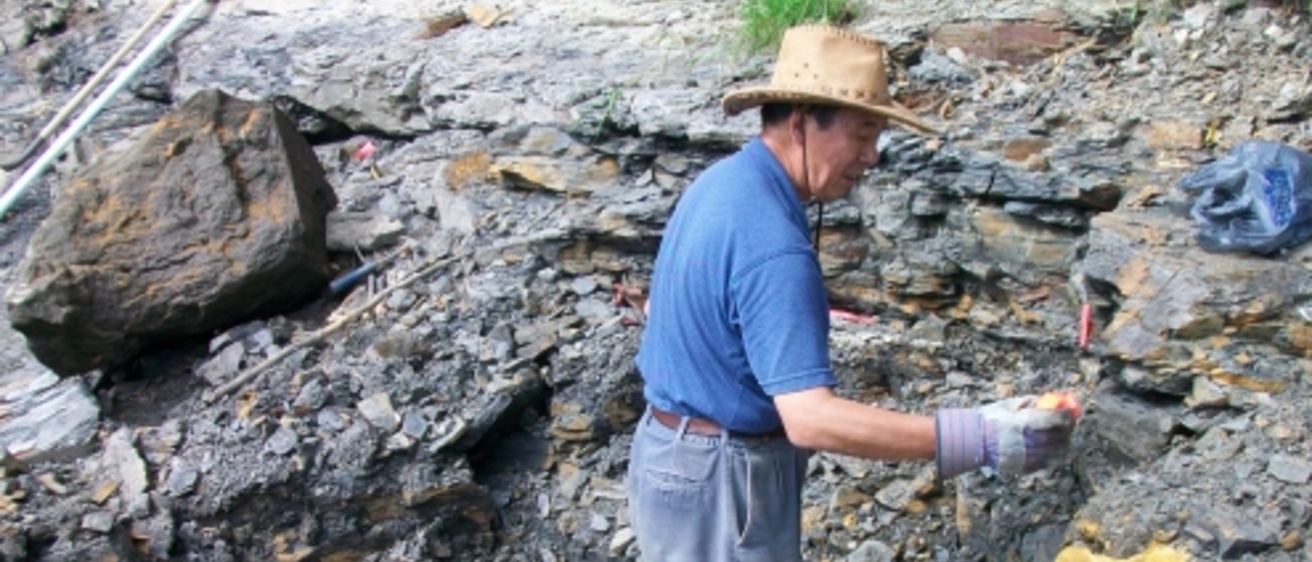In Iowa, many stratigraphic units are famous for abundant fossils. One of them is the Middle Ordovician Winneshiek Lagerstätte, which was recently found in Decorah.
This fossil fauna is characterized by many well-preserved fossils including some soft body and tissues. The fossil component indicates that the Winneshiek fauna lived in a special marine environment, and was dominated by many rare non-shelly taxa including the earliest eurypterid (left figure). This fauna thus opened a new window of the mid-Ordovician life, and was considered as “the discovery of the decade in early Paleozoic paleontology” by reviewers.
Studies have exposed that the Winneshiek Shale, which bears the Winneshiek Lagerstätte, is confined to a circular basin with a diameter of 5.6 km in Decorah area. Multiple lines of geologic evidence indicate that this basin was formed by a meteorite impact in Middle Ordovician, and known as the Decorah impact structure (right figure). This discovery not only provides new data to the study of the Great Ordovician Meteorite Shower, the exceptional crater-fill sequence preserved in this structure may also provide direct geologic and paleobiologic evidence to reconstruct the regional earth history which was eroded for ~20 million years by the Sauk – Tippecanoe megasequence boundary in the Midwest USA.
The Winneshiek Project

Sponsor: National Science Foundation
Background: The Middle Ordovician Winneshiek Lagerstätte, discovered by the IGS in Decorah, is characterized by many well-preserved fossils, including some soft body and tissues. The fossil component indicates that the Winneshiek fauna lived in a special marine environment, and was dominated by many rare non-shelly taxa including the earliest eurypterid.
Goals: Excavate, classify, and understand the fossils found in the Winneshiek Lagerstätte
IGS Strategies: IGS geologist H. Paul Liu (retired) led an effort to erect a temporary dam to divert the Upper Iowa River so they could excavate the only outcrop of the Winneshiek Shale. They brought 2-1/2 tons of shale back to the University of Iowa for analysis. They found more than 5,000 fossils—many unknown to scientists until now—in the slabs of shale.
Scorpy the Giant Sea Scorpion
One of the most dramatic finds was the Pentecopterus, a giant sea scorpion named for an ancient Greek warship, the Penteconter—likely the first true ship of war. The sea scorpion, the earliest and largest such animal of that period, mimicked the ship’s long sleek lines and sported a long head shield, a narrow curving body, and huge scary claw-like limbs that could easily trap the creature’s unfortunate prey. The Pentecopterus’ modern relatives include spiders, lobsters, and ticks. Imagine a six-foot tick.
Working with colleagues at Yale University, Liu has been able to form a picture of how this predator looked and what its life was like in the shallow and likely brackish waters that covered Northeast Iowa millions of years ago.

Contact Us

H. Paul Liu (retired)
Bedrock Geology and Paleontology
319-335-1586
huaibao-liu@uiowa.edu
